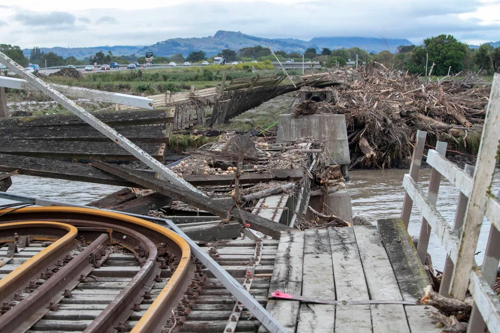Like seemingly every other year, 2023 presents a kind of sliding door moment for Australasian CFS operators. It’s tricky. On the one hand, organisations need to learn from what is in the rearview mirror (pandemic backlogs) while, on the other hand, they need to keep their radar scanners pointed forward (technological change), all the while doing their best to thrive in the present day.
At the onset of the pandemic, volumes at Australasian ports jumped all over the place.
These fluctuations masked long-term projections of the steadily increasing container volumes that have occurred over the past 50 years. As congestion conditions have started to ease, the upward containerisation trajectory has re-established itself. This persistently expanding flow of goods has tested the capacity limits of existing infrastructure, forcing logistics providers to recalibrate both their short and long term strategies.
It takes approximately 35 minutes to walk the length of the massive 240 hectare Moorebank Intermodal Precinct southwest of Sydney. This gigantic logistics centre, along with Ruakura Superhub, (located outside of Hamilton, New Zealand) are just two examples of a new kind of Container Freight Station (CFS) opening up across Australasia. These new “inland ports” are being designed to rethink logistics opportunities both regionally and globally.
The infrastructure dilemma may finally be achieving critical mass. With a sharper focus on casting a wider net in regards to prospective new development, these new inland hubs are enabling a shift away from seaport confinement. These facilities are thriving specifically because of their strategic positioning near main centres, making the connection of inland rail to existing port facilities a crucial component in the wider network moving forward.
“This issue has been put in the too-hard basket for too long. Ensuring Australia has the most efficient, most productive and the most sustainable freight rail network must be a national priority, and directly connecting Inland Rail to the ports is central to that goal.”
- Neil Stephens - CEO, Port of Brisbane
Beyond the long-tail muddle of the global pandemic, unprecedented weather events have also wreaked havoc on supply lines and destroyed or impaired key infrastructure components. From devastating cyclones in Hawkes Bay, New Zealand and Port Hedland, Australia, to widespread flooding events (in numerous Australasian locations), these hugely impactful events, have forced supply chain operators to bump up their infrastructure capacity; either via the creation of additional storage at existing facilities or by breaking ground on new facilities / transport corridors.

Many of the current structural initiatives to the wider CFS network are being designed with climate mitigation in mind. The Port of Auckland intends to become emission free by 2040, and, in the interim, has acquired the world’s first full-scale, electric shiphandling tugboat. Australian Ports have started to align their decarbonisation strategies with their profit forecasts.
The Ports of Australia Sustainability Strategy Guide is the first of its kind in the world and provides a sustainability roadmap for both Australia and New Zealand. The business continuity and network resilience threats from these events have provided the impetus to implement measures that will provide a more dynamic and flexible business model.
Regulatory breakthroughs have allowed supply chain operators to clear some of the more troublesome compliance hurdles underpinning long-term CFS backlogs. There are many notable examples of this. In New Zealand, the approval of government funding for a domestic coastal shipping network along with the continued development of inland ports (Ruakura, Whikitau) signal the need to bring additional capacity online and provide resilience for an overstretched network.
The Extinguishment of Liability Bill also passed in Australia, paving the way for the Port of Newcastle to push ahead with the creation of a new container terminal. These initiatives (and others like it) have strengthened existing networks and helped facilitate better outcomes throughout the entire supply chain, from origin to last mile.
Early this year, the Australian Productivity Commission released a report summarising the current state of Australia’s container ports. The report calls for a continued development of sites where land use is less contested along with sustained investment in suitable digitisation strategies and by harvesting opportunities from machine learning, where available. Regarding general technological advances in automation at Australian ports, the report states:
“There are some clear benefits from automation that appear to be driving its steady adoption by Australia’s container terminals. The use of technology has the potential to improve the safety, reliability and consistency of terminal operations and reduce labour costs.”
- Australian Productivity Commission Inquiry
The inquiry highlighted biosecurity and customs clearance as one of the most fertile opportunities for technology software investment. As things currently stand, administrative complexities and delays are leading to time-consuming and redundant paper based processes around international border compliance. Modernising these processes through appropriate technology advances can help Australasian container freight stations forge a more efficient and productive future state.
Like every other component in the supply chain universe, the structure and processes at Container Freight Stations will need to adapt and innovate in order to stay ahead of the curve. Across Australasia many of these adaptations have already begun to be implemented, both internally and throughout the communities in which they intersect.
© Copyright 2024, Sandfield Associates Limited. All Rights Reserved. Privacy Policy